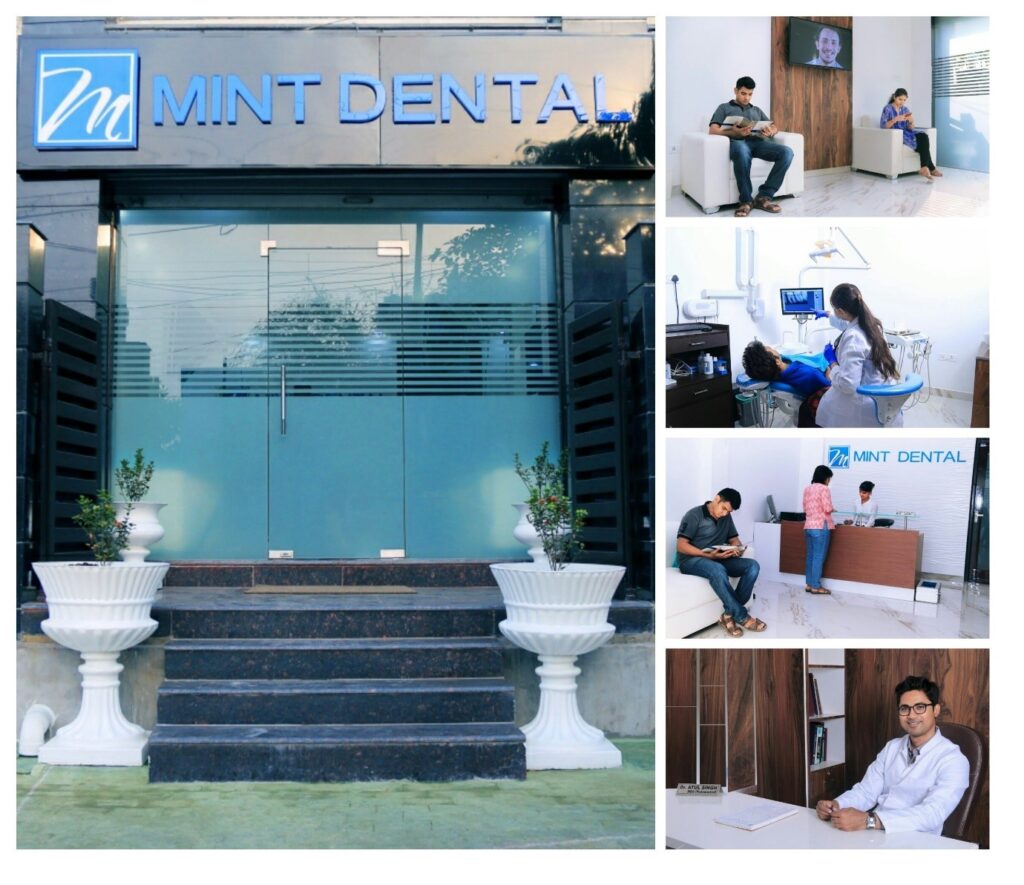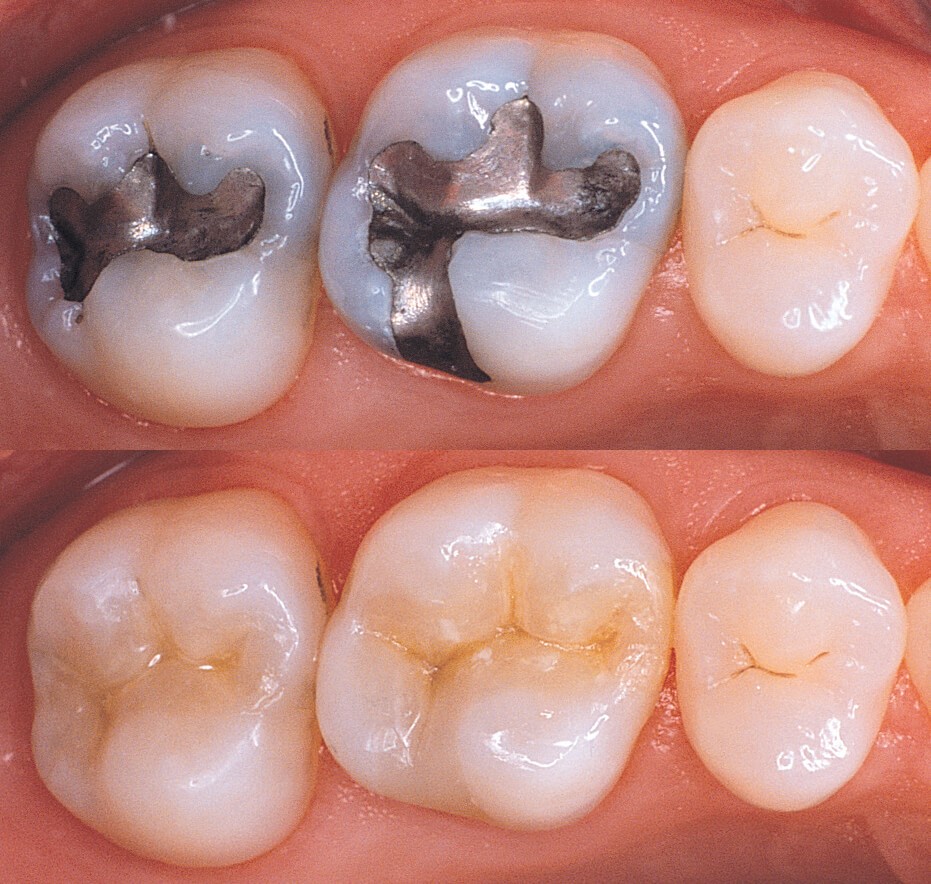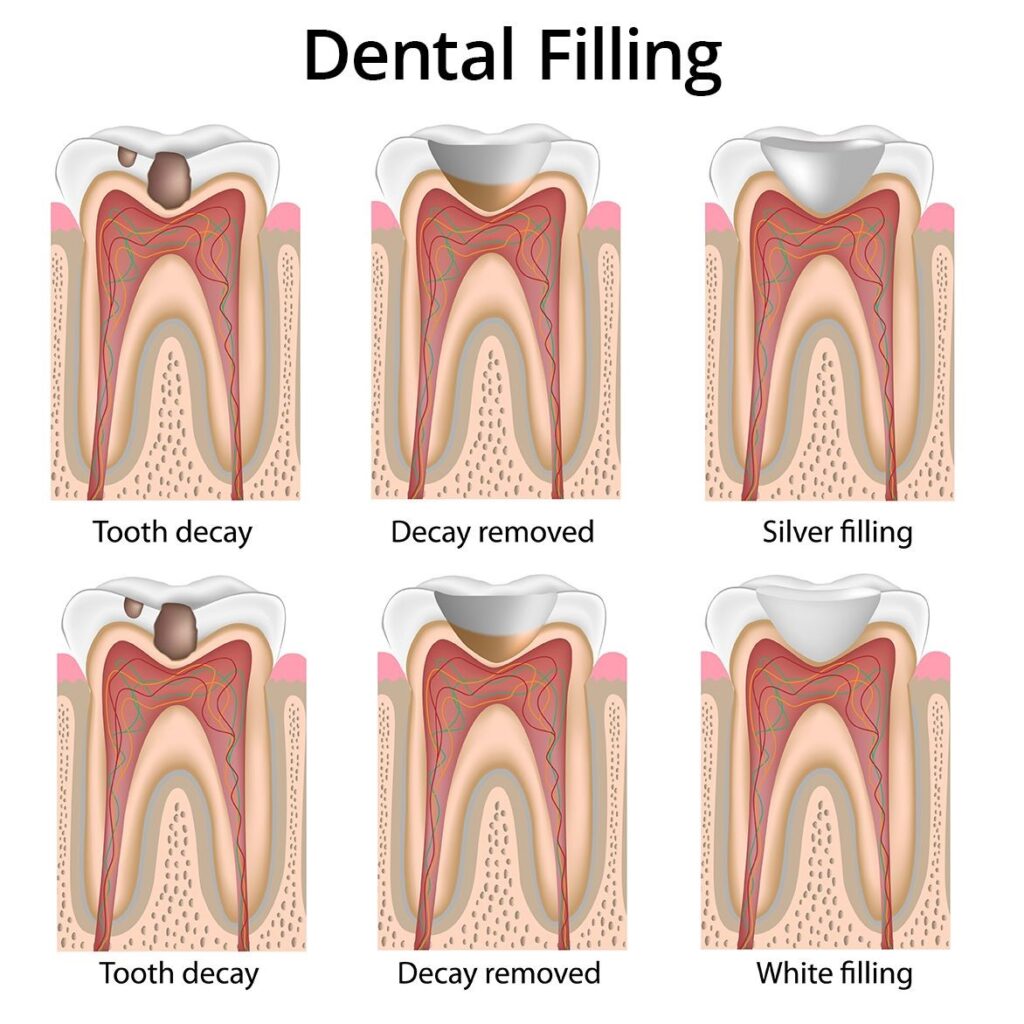Give Your Smile a Natural Look With Tooth Colored Fillings
Tooth-colored fillings, also known as white fillings, are dental fillings that restore and mimic the natural appearance of tooth structure. At Mint Dental in Lucknow, we use white-colored filling material for restoring teeth that have fractured or decayed. Dr. Atul Singh(MDS) may also use tooth-colored fillings to change the color, size, and shape of teeth. They are also useful in closing gaps between teeth, repairing chipped teeth, and making teeth appear to be more straight or even.

Dr. Atul Singh(MDS) at Mint Dental recommends tooth colored fillings as they are very popular among people. They are made from acrylic and glass particles and match very well with the color of the tooth to give it a natural look. There are different types of tooth fillings available in the market but white colored fillings are preferred by a large number of people due to the various benefits associated with them. Here is a list of benefits that you get when choosing tooth colored fillings:
They act as the best option for restoring front teeth or the teeth that are visible during laughing or talking as they match well with the original color of the tooth, making the tooth look natural.

These fillings not only help in restoring tooth damaged with cavity but are also very beneficial in repairing a broken or chipped tooth.
They bond to the tooth structure chemically and do not require the placement of slots, grooves or pins to mechanically retain them.
The bonding of white tooth colored fillings to the tooth restores majority of the original strength of the tooth.
They completely harden in seconds instead of days compared to other materials.
Tooth sensitivity, if any, due to the use of composite resin is minimal and brief.
They can be repaired easily if damaged.
Worn down front tooth repaired with tooth colored composite filling
What are the advantages of tooth colored fillings (white fillings)?
They closely resemble natural tooth in color and appearance.
They bond to tooth structure and thus do not require the placement of mechanical grooves to retain them.

The bonding of white fillings to the tooth restore majority of the original strength of the tooth.
They completely harden instantly saving time when compared with other dental materials.
Tooth sensitivity with composite resin use is rare.
They may be used on anterior and posterior teeth without compromising aesthetics.
If they get damaged then it can be repaired comfortably.

What are the disadvantages of tooth colored fillings (white fillings)?
Frequent and prolonged exposure to coffee, tea, red wine and foods with rich dyes, like curries, etc. may stain them.
They may not be as durable as metal fillings (However this may not be true for modern composite materials).
Frequent and/or prolonged exposure to liquids with a high alcohol content may degrade them.
They are more expensive than dental amalgam fillings.
Most tooth colored fillings are composite resin fillings
Tooth colored fillings were first introduced in the 1960’s. Since that time tooth colored filling materials have undergone continual improvements in toughness, aesthetics and material handling. The most versatile and commonly used tooth colored filling today is composite resin filling. A composite is a material in which filler particles are bound together by a hard matrix material. For composite resin fillings a fluid matrix of an acrylic, called BIS-GMA, is hardened around glass filler particles to form composite resin. Trace metals like cobalt, gold and copper give color to the glass while zirconium and titanium oxides add opacity.
The Process of Filling a Tooth
There are many reasons for filling or restoration of teeth: decay and fracture of teeth are two common ones. No matter which material is chosen, the procedure is almost the same. First Dr. Atul Singh(MDS) at Mint Dental may need to anesthetise the area (usually by a numbing injection), then the tooth is “prepared” by removing decay and making it ready for the filling. Next, the filling material is placed onto the tooth. Once it has bonded to the tooth, the process is basically complete.

Now, here’s the difference: In order to achieve a good bonding with a traditional amalgam filling, it is often necessary to make “undercuts” in the tooth that help to hold the amalgam in place. This means that some healthy tooth must be removed, leaving less of the tooth intact. In time, the weakened tooth may start to crack.
But composite resin fillings don’t require undercuts to make a strong joints — instead, they form a close bond directly to the prepared tooth. This more conservative treatment may ultimately lead to a better and longer-lasting fillings.
What are the alternatives to composite resin (tooth colored) fillings?
Alternatives to composite resin fillings vary depending upon the:
(1) Size of the tooth to be restored
(2) Strength requirement of the filling material
(3) Aesthetics desired
(4) Desire for a longer lasting filling.
The most aesthetic and long lasting alternatives to composite fillings are laboratory fabricated composite and porcelain inlays. They are longer lasting than composite resin and also more stain resistant. Porcelain inlays do not degrade in the presence of alcohol and are even esthetic. However the cost is much higher and the need for at least two visits in order to place them because they are made in a dental laboratory.

Compomers (modified composite resins) are also alternatives to composite resins. The matrix of this composite filling is composed of a polymer resin and the filler is an aluminum-fluoride-silica powder. Compomers are not as durable as composite resin but they release fluoride and thus are very good in non-load bearing areas more prone to dental caries. Although these materials look good they do not offer as many options in terms of color and translucency.
Silicate ionomer and glass ionomer tooth fillings are other alternatives to composite resin (white) fillings. Both of these materials are more brittle than the other alternatives to composite fillings and they break easilty compared to composite fillings. Silicate and glass ionomers are also not suited for use in posterior teeth, like molars and premolars, where greater strength is required. Silicate and Glass Ionomer restorations also wear more compared to composite resin fillings and do not last as long. Furthermore, neither silicate or glass ionomer filling materials can match the natural appearance of composite resin. However, these restorations are capable of releasing fluoride into the tooth structure they are bonded to strengthen the tooth and make it more resistant to decay.
The best choice for tooth fillings?
According to Dr. Atul Singh(MDS) at Mint Dental, Lucknow, when it comes to selecting the best material for your particular tooth Aesthetics and longevity is the key. Some of the considerations your he may take into account when recommending a particular filling material for your teeth is the current condition of the teeth, the size of the area to be restored, the location of the teeth involved and the forces (chewing, shearing, grinding, etc.) being placed on the teeth during chewing and other normal movements of your jaw.
It is normal to experience sensitivity to hot and cold when composite fillings are first placed, however this will subside shortly after your tooth acclimates to the new filling.
You will be given care instructions at the conclusion of your treatment. Good oral hygiene practices, eating habits, and regular dental visits will aid in the life of your new fillings.
To set up an appointment or to ask questions about Tooth colored filling materials, get in touch with Dr. Atul Singh (MDS) at Mint Dental. You can book your appointment at +918795229292 or fill the appointment booking form present on our page.
